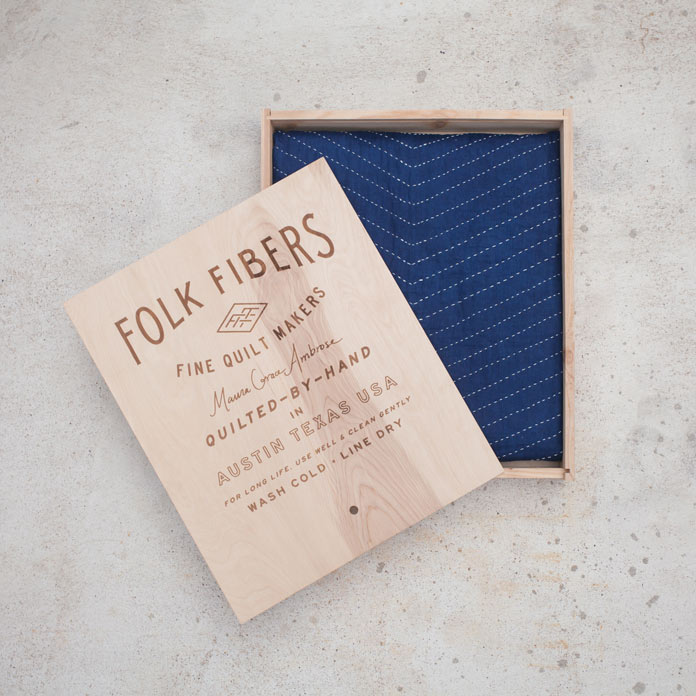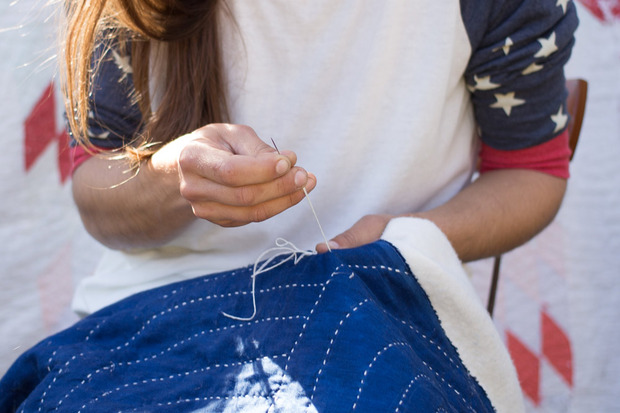Folk Fibers Indigo Wholecloth Collection
Hand-quilted and nature-dyed quilts from Austin’s Maura Ambrose


Maura Grace Ambrose is known chiefly as a sage of 21st-century quilting. From her home in Austin, Texas, the young Savannah College of Art and Design graduate hand-sews gorgeous, oversized quilts from scraps and new materials, injecting the traditional domestic craft with fresh life. Ambrose has just added a new series to the Folk Fibers portfolio with the indigo wholecloth collection, which uses dyes from plants harvested by Ambrose herself and fermented in her backyard.
“The smells that come from an active indigo vat are incredibly stinky, but I admit I’m now fond of them,” says Ambrose. “I especially love the sweet, earthy smell of the fabric once it dries.” While few would be able to distinguish between natural and synthetic indigo by sight, Ambrose cites dye artist Jim Liles’ assessment that the natural dye creates subtler and more elegant shades. Looking at the finished product, it’s clear that the time-consuming process is well worth the inconvenience.


Asked about the definition of a wholecloth quilt, Ambrose is quick to correct that “quilting” isn’t limited to patchwork throws: “The wholecloth quilt has a history; it was the most widely used quilt during colonial times as it was one of the first techniques brought to America by immigrants. It differs from other traditional quilts in that there is no piecework or appliqué. A solid piece of fabric becomes the background to showcase the stitched quilting designs.” In the case of her recent collection, the stitching designs are modeled after the Japanese sashiko method.

“Sashiko quilting uses simple running stitches that are larger than traditional quilting stitches and are sewn in repeating patterns,” Ambrose explains. Chevrons, curves and angled lines give personality to the quilts as well as reinforced structure. Approximately 40 hours of work go into each quilt, although the artisan insists that her method is more determined by quality than nostalgia.
“My work is created using customary and time-honored traditions but I don’t resist change to remain chiefly historical,” she says. “Hand-dyeing and hand-quilting are techniques that are long established but I am not re-enacting them for historic accuracy. The choices I make are connected to quality materials and skills in craftsmanship, and more often than not, those elements are rooted in the past.”

So what makes a good quilt? According to Ambrose, “the essential substance or nature of a ‘good quilt’ is a matter of the heart and root of existence.” The indigo wholecloth quilts are available from the Folk Fibers online store starting at $875.
Images by Scott David Gordon and Theron Humphry for Folk Fibers











